My inspirational teacher, Richard Milward, featured in https://derrickjknight.com/2012/07/04/no-one-forgets-a-good-teacher/ stressed that a story should have a beginning, a middle, and an end. As I have progressed through my reading life I have come to believe that the journey through a book has been more important to me than the focus on a satisfactory ending. Charles Dickens, however, would have followed Mr Milward’s mantra – and rightly so.
The exception of course was
This was no fault of the author who had panned out his tale in his even more than usually cryptic notes, but unfortunately fell to a fatal heart attack when only a third of the way through the work. Just three of the chapter instalments had been published and Dickens had been compelled to elide some of the text for the next two because he had written too much for their publication in their customary form. It was left to others to edit the rest and reintroduce the omissions.
Despite its gradual infusion of foreboding, the writer’s customary dry wit and humorous descriptions feature throughout the published sections. The characterisation is typical of the master, and has the promise of more complexity than usual.
I have to acknowledge a gradual slackening of interest in the last fifty pages or so: perhaps I did really need to know there would be one of my old schoolmaster’s favoured endings; perhaps the humour had lessened; perhaps the emphasis on the likely death of Edwin reflected Charles Dickens’s premonition of his own demise.
Would it not have served our great novelist’s memory better to have left the publication of Edwin Drood at the episodes he saw into print himself?
Christopher Hibbert’s introduction to my Folio Society edition is useful and informative, as is the publisher’s note on the text and reproduction of Dickens’s own outline plan.
The illustrations,
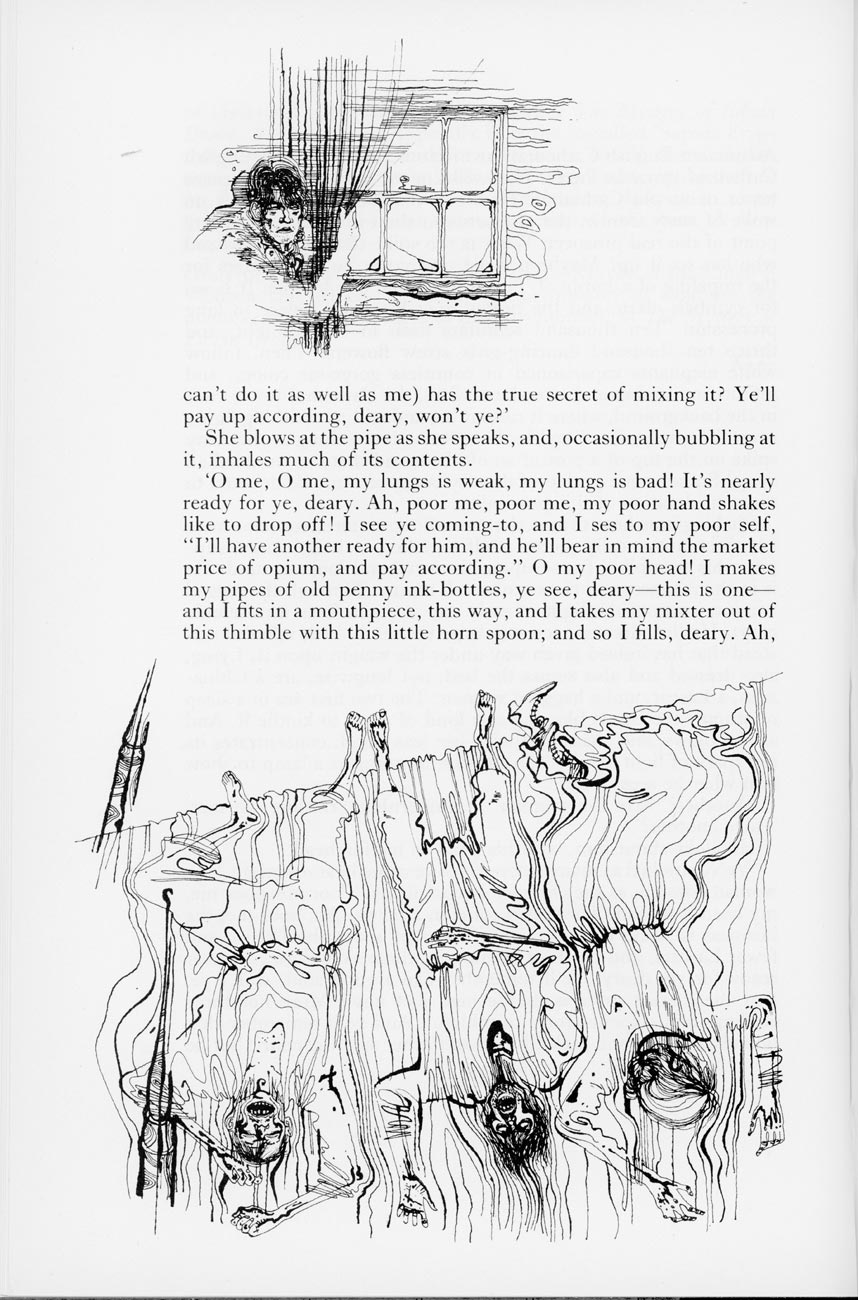


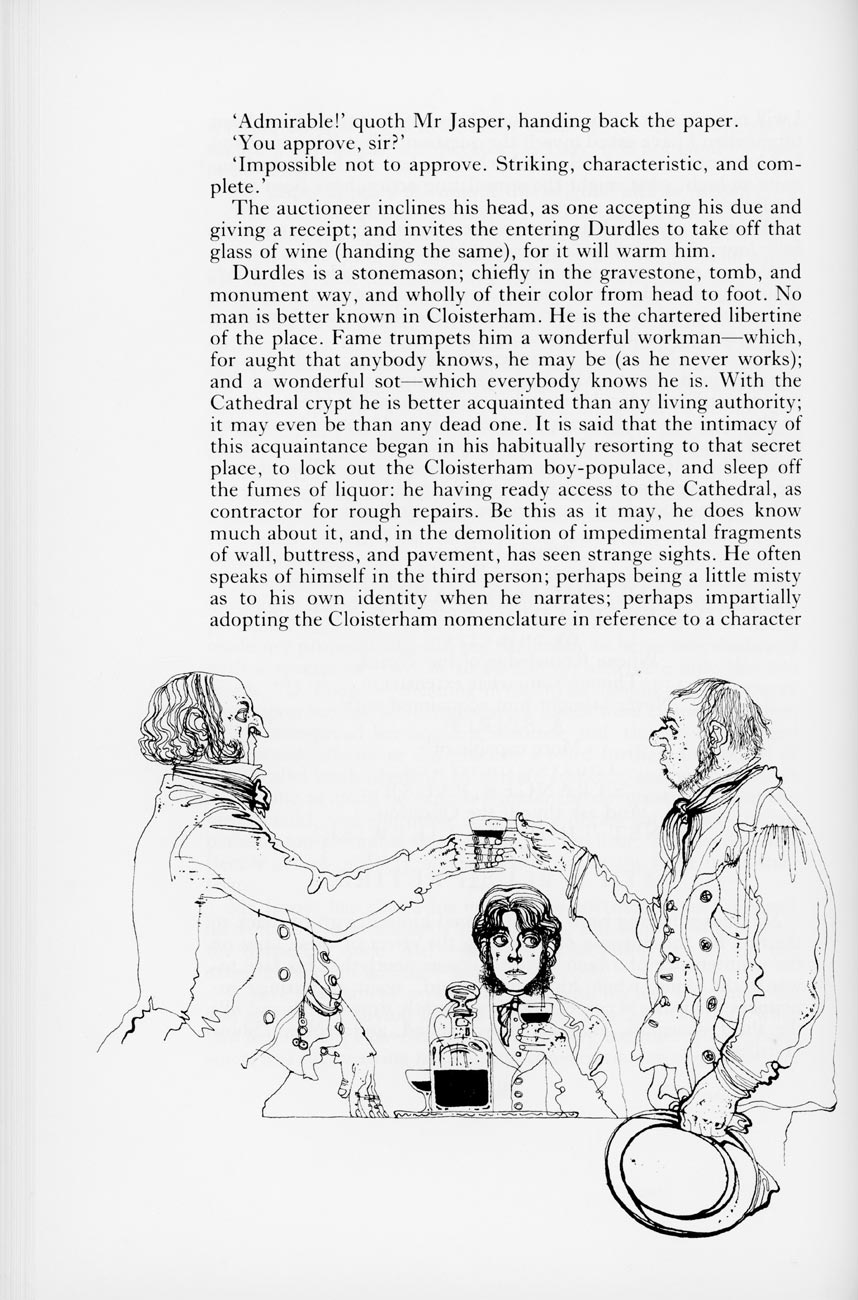



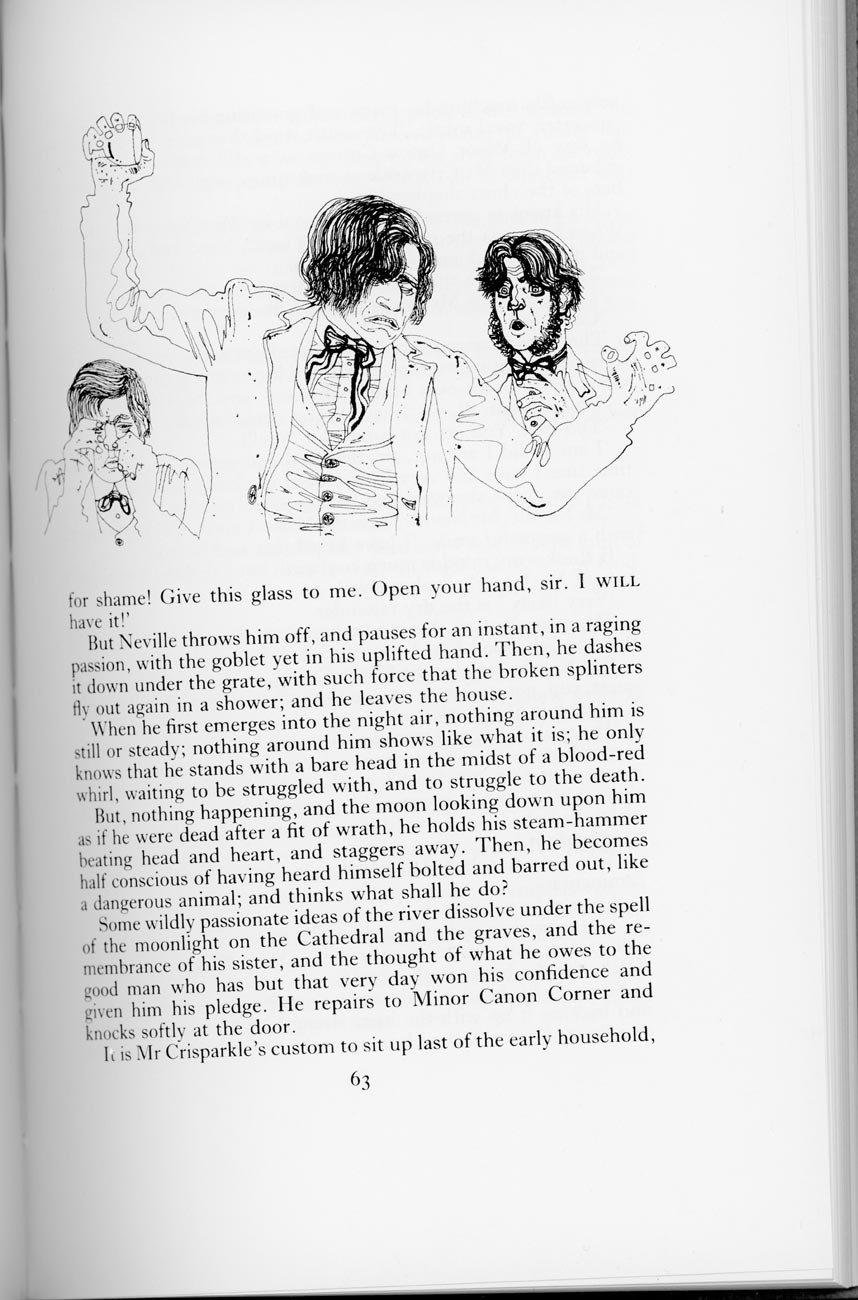





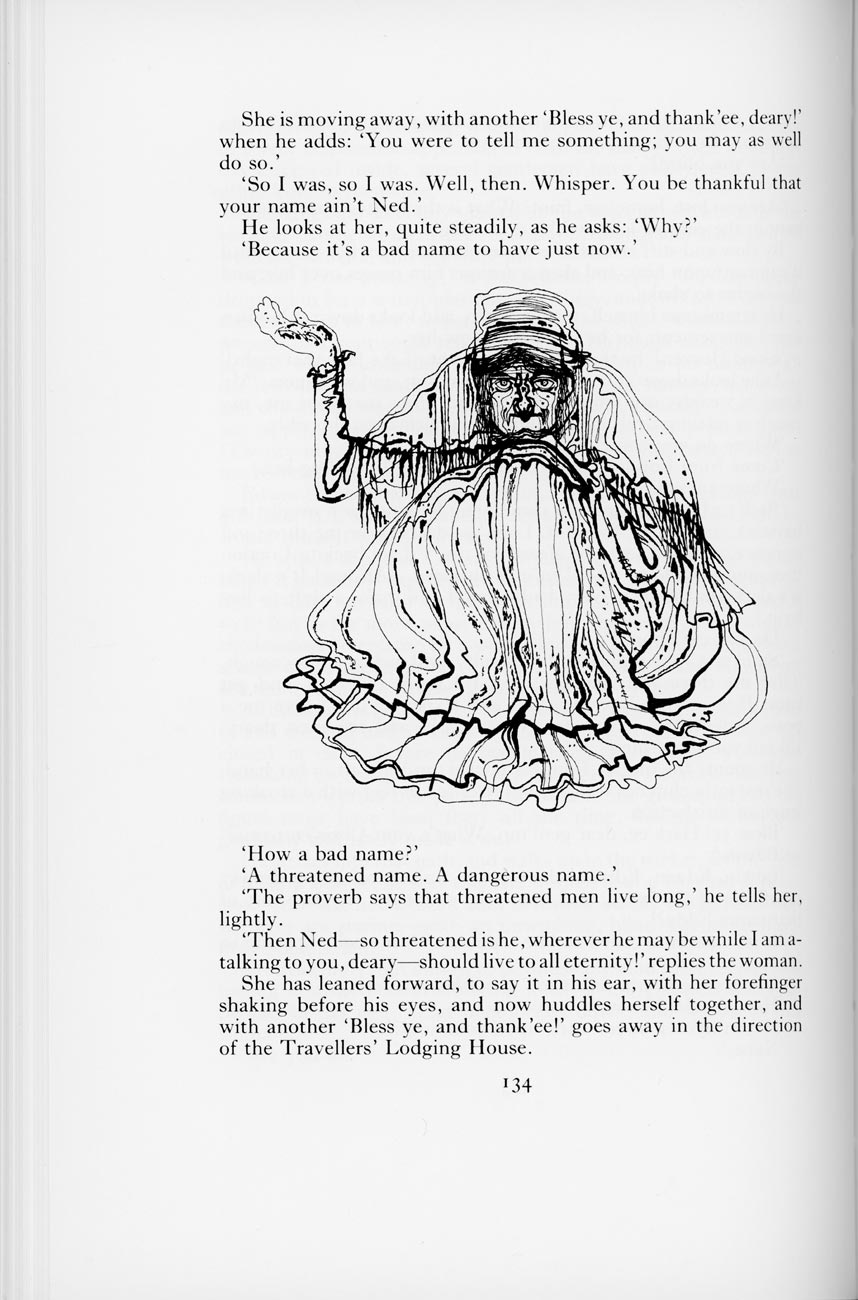
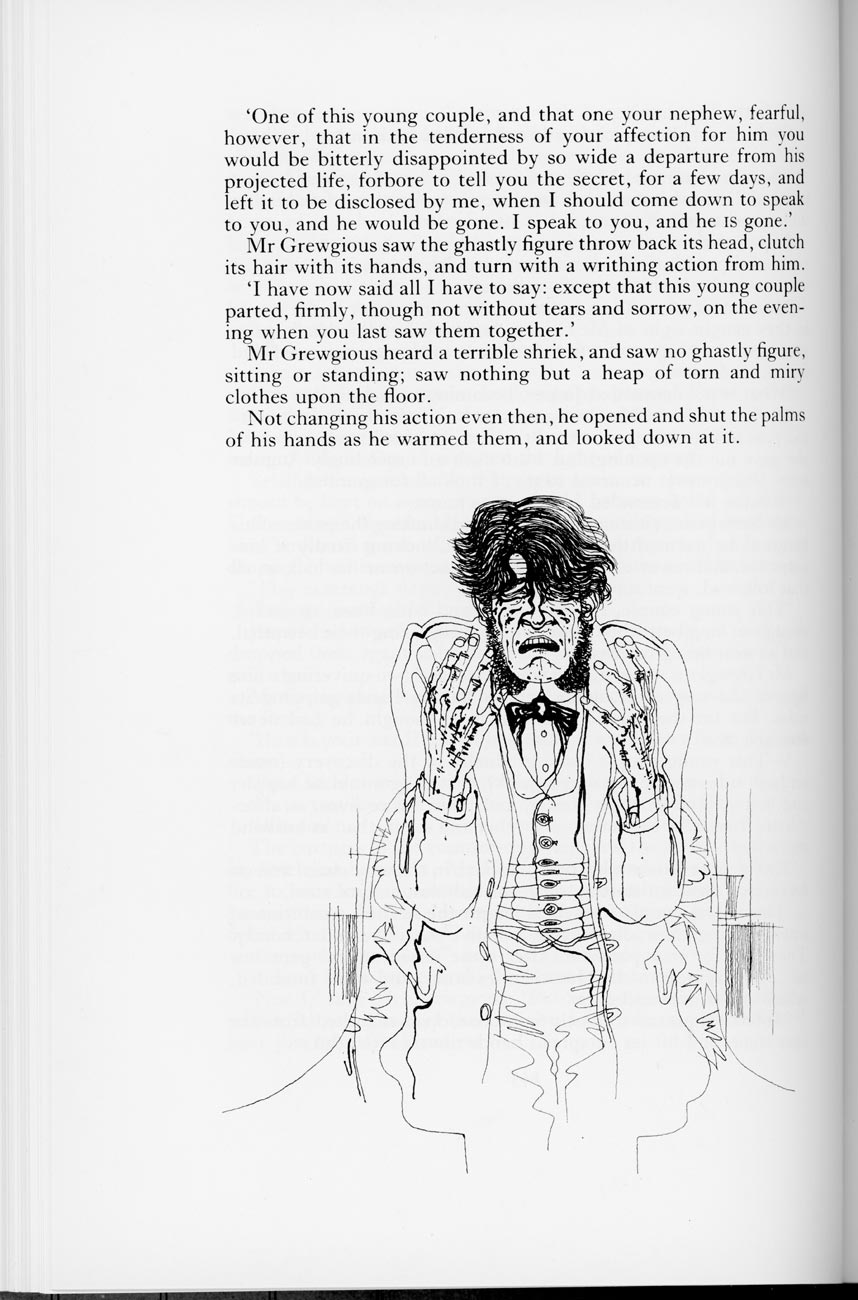


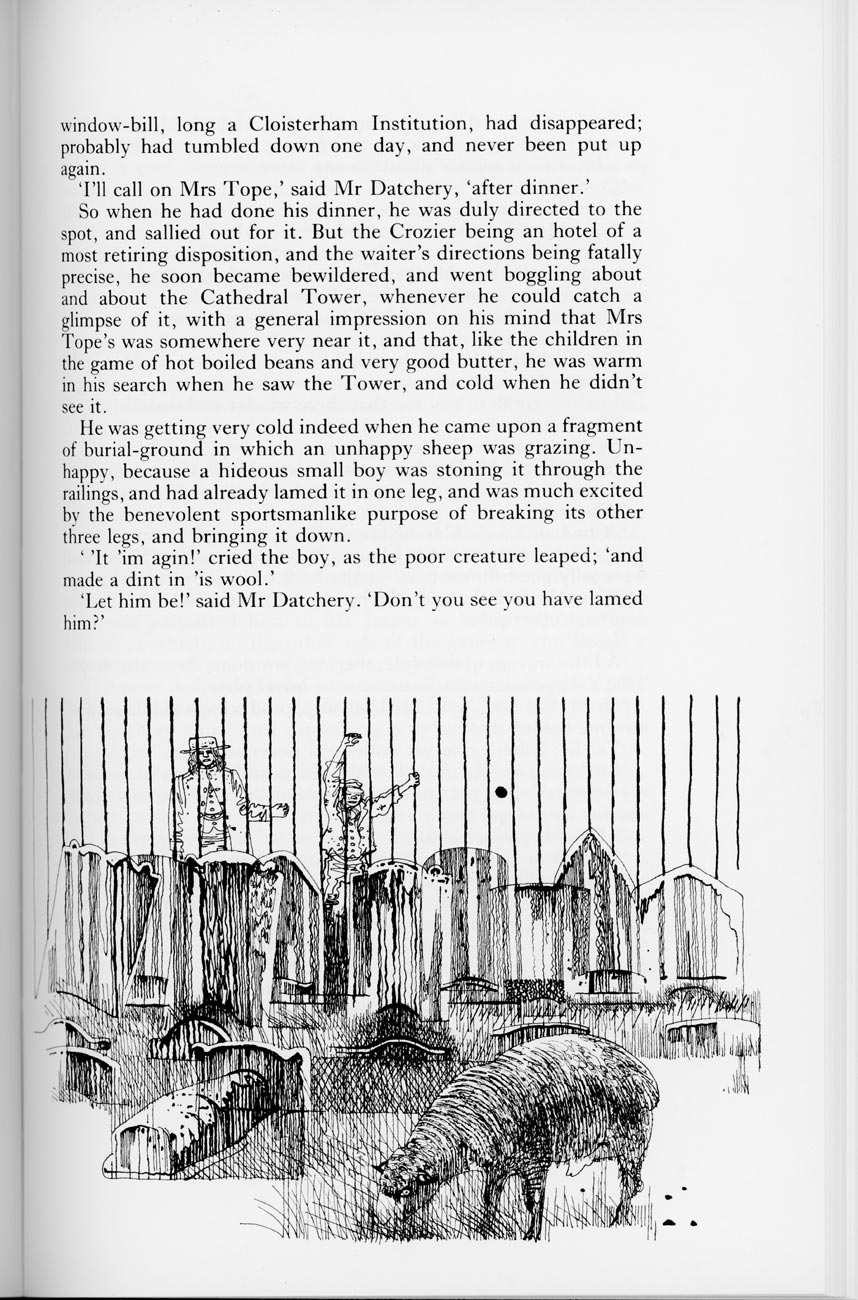

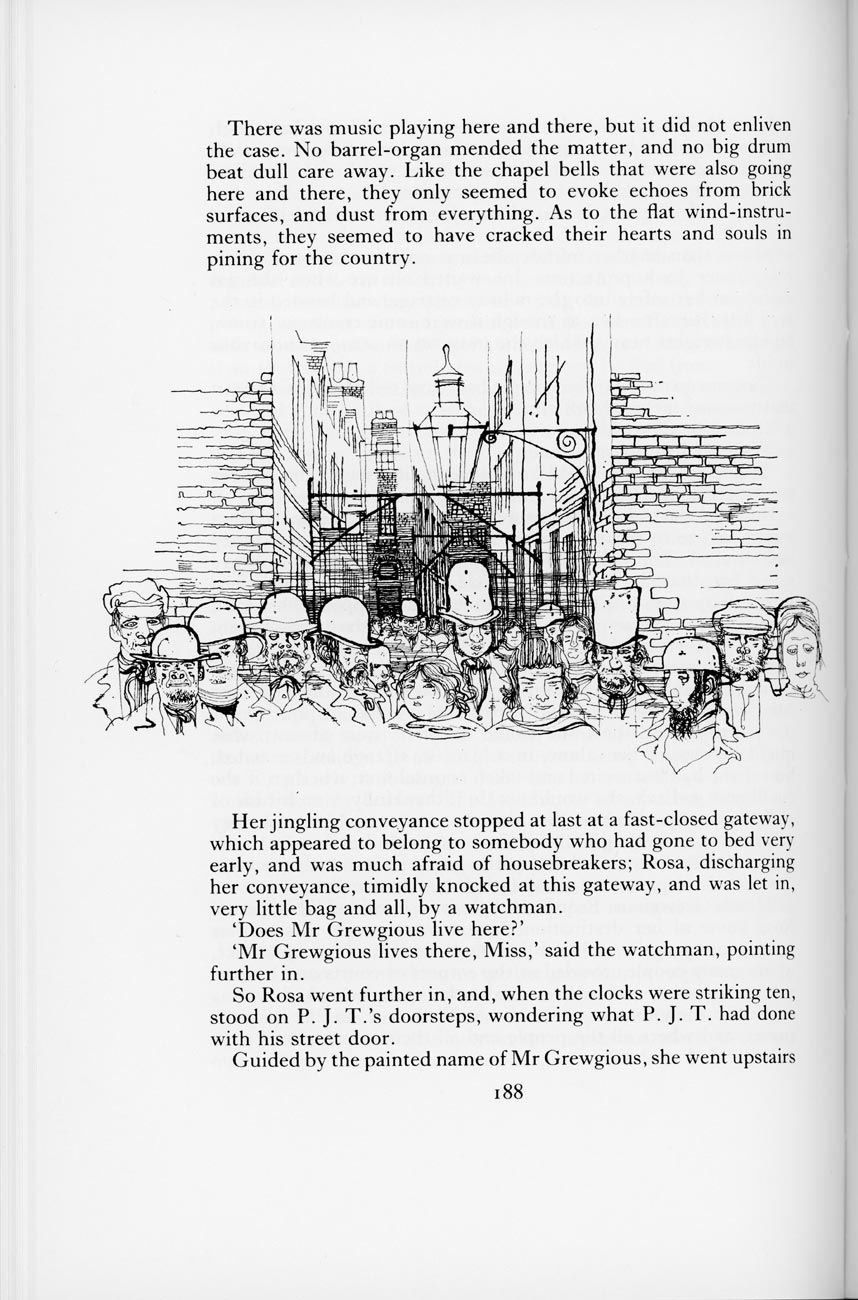



in the artist’s typically lively idiosyncratic style, are faithful to the text and refuse to be constrained by the same boundaries as the typeset blocks.
This evening we dined on Jackie’s Chicken and leek pie, which she photographed herself; creamy mashed potatoes; green peas; crunchy carrots; piquant cauliflower cheese; tender cabbage, and tasty gravy with which we jointly finished the Sauvignon Blanc.

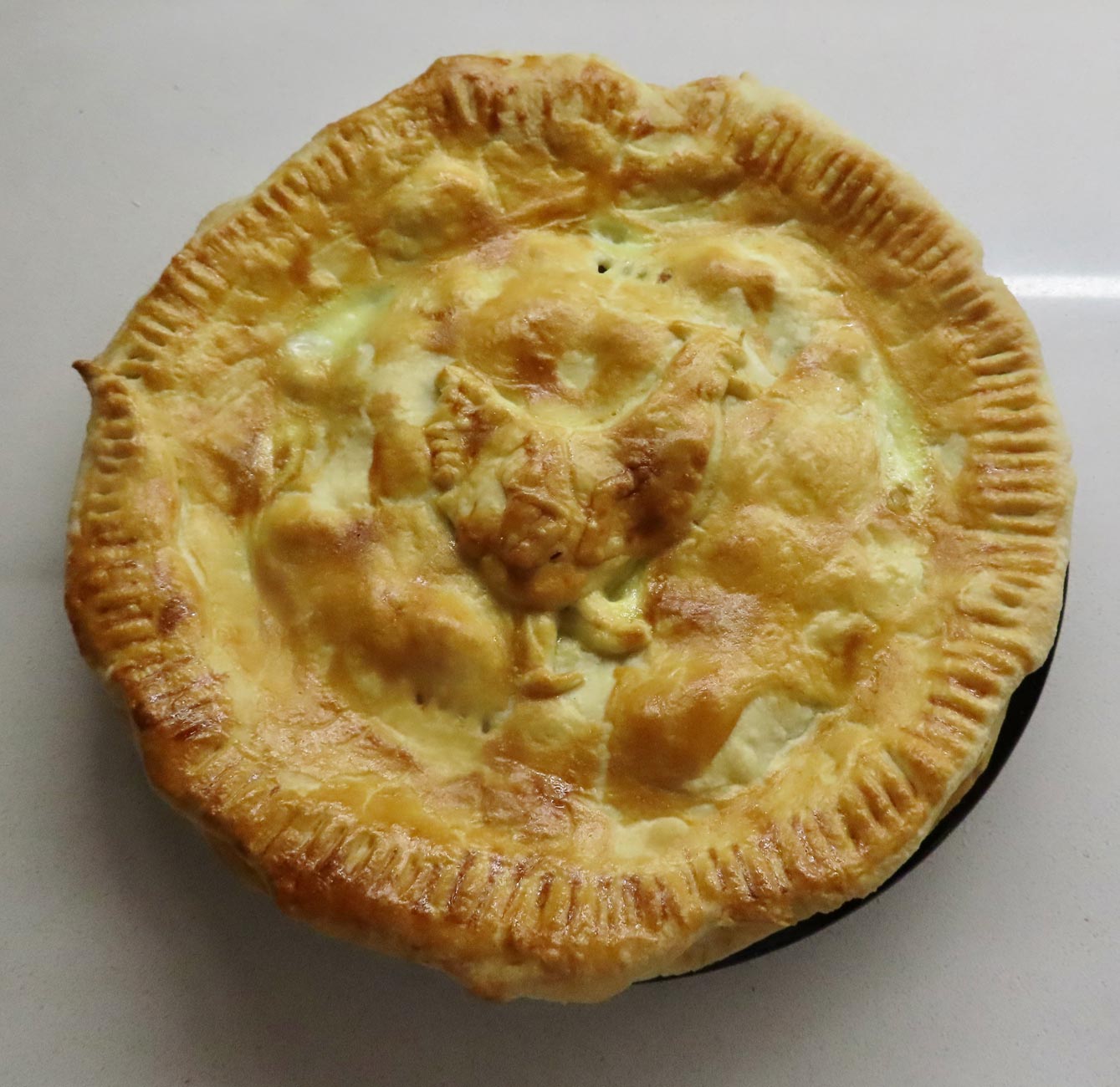
Derrick, the beginning and end of your supper sounds wonderful –
and I’m sure that the middle of Jackie’s beautiful chicken pie was equally satisfying.
As always, your posts are fantastic food for the mind. 🙂
🙂 Thanks very much, Emma.
The meal sounds delicious.
It was. And more for tomorrow 🙂 Thanks very much, Mrs W
Your welcome.
I wasn’t familiar with this final work by Dickens. What a pity he didn’t get to complete it as he would’ve intended.
It was indeed. He was only 56. Thanks very much, Rosaliene
Wonderful illustrations
Thanks very much, Sheree
Marvelous illustrations, dynamic and extremely expressive, with exceptional characterization, almost caricature-style.
My compliments to the Culinary Queen for yet another gorgeous pie.
Thank you so much, Dolly
You are very welcome, Derrick.
I love the vibrant illustrations filled with movement and expression! I have read most of the novels penned by Dickens, but admit to giving this one a skip. I used to read them on my two-day train journeys home from university twice a year 🙂 The chicken pie looks very appetising!
Thanks very much, Anne.
Wow ! I love the pie ! I can see the chicken on the crust. ?
Thanks very much, Sally. It was delicious
I haven’t read the book.It’s sad that he wasn’t able to finish the book. I know there have been various theatrical versions.
That pie is gorgeous!
Thank you so much, Merril.
It’s a good thing you didn’t put Jackie’s pie first, Derrick. I would have never scrolled further. That looks so delicious, but too pretty to eat! It could be on the cover of a magazine.
🙂 Or a jigsaw puzzle? Thanks very much from us both, Jill
You review of Edwin Drood is enlightening. One I haven’t read. My mother bought me an old copy 60 years ago in London of The Old Curiosity Shop with marvelous color plates by Henry Stone published by A Constable purchased in the old Curiosity Shop. No dates in it. I should take pictures of the plates.
That would be interesting, Sherry. I once provided consultancy to a mental health project very close to The Old Curiosity Shop, an photograph of which appears in https://derrickjknight.com/2015/08/22/29433/
Thanks for the link. Nice to see the shop.
Enjoyed your Mr. Drood review, Mr. Knight! So interesting….and sad Mr. Dickens wasn’t able to finish writing it.
I always enjoy Mr. Dickens…and the illustrations in this book are delightful in their details.
Jackie, your pie looks so beautiful and yummy! And love the little chicken perched in the center! 🙂
HUGS!!! 🙂
Thanks very much from us both, Carolyn X
I would have to agree that posthumus completions of a work-in-progress don’t usually work out very well. The illustrator of your edition was the same as the one who did Pickwick Papers?
Thanks very much, Liz. Yes, the very same. I have the whole set. In one of my earlier posts I wrote about the survey Folio did asking members to suggest pairings of writers and illustrators. This was mine.
You’re welcome, Derrick. You have a very intriguing library of books.
🙂
Oh wow Derrick, I bet you enjoyed this wondrous piece on page ’45’, a truly exquisite description of the carriage
“to this ignominious avenue of approach, Mr Crispsparkle repaired, waiting the arrival of a short squat omnibus, with a disproportionate heap of luggage on the roof … like a little Elephant with too much Castle”…. simply superb imagery…
Well spotted, Ivor. That brilliance tailed off towards the end. Thanks very much.
Thank you Derrick, for producing all those wonderful scans. ?
I love the illustrations! And the pie looks great!
Thanks a lot, JoAnna. A perfect pie.
‘Tis one I have never read. And ’twill probably be hard to find here in the colonies. But the illustrations are exquisite. Thankyou.
And thank you for reading and commenting on this., John
Jackie’s Chicken and leek pie looks delicious! beautiful illustrations! 🙂
It was delicious, Lola. Thanks very much.
What a pretty pie! You have made me hungry with your descriptions.. to the point where I had to go warm up a piece of pizza.
Thanks very much, Judy
I am grateful for that peek into the unfinished story of Edwin Drood. I have alway read Dickens without any artwork in accompaniment and have never felt the need of visual assistance for the imagery to spring before my eyes. The artwork contained in the Folio Society editions make for a spectacular series in their own right.
Tanks very much, Uma. Keeping, himself a Londoner, captures Dickens’s characters so well.
It’s so unfortunate for us readers when authors die in the middle of a work (and even more so for they themselves, I suppose…) I have lamented missing out on their actual intentions on several occasions: while reading the fragmented last installment of the Hornblower series, and the Illumination trilogy, for example. But, I agree. In general it probably would be better left alone than being finished by someone else. Great illustrations, and I’m also impressed with Jackie’s dough chicken. Very fancy!!
Thanks very much, Anna. This is the only posthumous unfinished work I have read
That pie is a beauty, and I bet it tasted as good as it looks. I have never read Edwin Drood, and judging from what you wrote, I probably never will.
Wise decision in my view, Laurie. Thanks very much.
I have sometimes wondered what happens to an artist, author or filmmaker’s uncompleted work when they die. I have never read Edwin Drood, and wasn’t aware Dickens had died before finishing it.
Thanks very much Lavinia. I believe there has been one published attempt at completion
I didn’t realise he didn’t complete this one.The illustrations are superb.
Supper once again has me yearning for the same and it’s not even seven AM!
Thanks a lot, Sue 🙂 from us both
Chicken and leek pie complete with a chicken as decoration. Wow!
Thanks a lot, John
It is rough when an author dies with an unfinished work. His accident is what caused Stephen King to finish his Dark Tower series.
Thanks a lot, GP
Very interesting!
Thanks very much, Dwight
I’m always happy to see a pie! Emily Bronte’s second book would have been interesting, finished or unfinished. There is some talk of there having been one.
I still love picture books.
I’m pleased. Thanks very much, Laleh
❤️
Great illustrations!
And super delicious and good looking dinner ??
Thank you so much, Ribana
For some reason the photos are not loading – o am coming back – it what I read reminded of how much I like how you think and how your share about your experiences (with everything from itedtaure to gardening to eating and even banking – hahah )
And have me pondering what you Wrote about the beginning middle and end
I hope you get everything, Yvette. Thanks very much for struggling with it.
People tell me my posts take a while to load too???
And it was not that much of a struggle at all!
I think I am just so used to instant – haha
🙂
That pie looks delicious! But of course it is now an ex-pie. It is no more and has ceased to be.
I have read Edwin Drood, though not the wonderfully illustrated Folio edition. All the time I was reading it I had to keep telling myself that I would never know how Dickens would end the story just so that I wouldn’t get too involved in it, but of course, I did get involved. I think it has a really fine beginning; there is a great sense of impending danger and John Jasper is a strange and somewhat frightening man. There are a number of other interesting characters and I believe Dickens would have made a great novel out of it. I think it does tail off towards the end but I appreciate knowing something of what Dickens wanted to happen next. The story stuck in my mind for some time after having read it. Not knowing the end did leave me feeling frustrated and let down.
A very good analysis, Clare. Like minds, too, I think. Thanks very much
Thank you, Derrick.